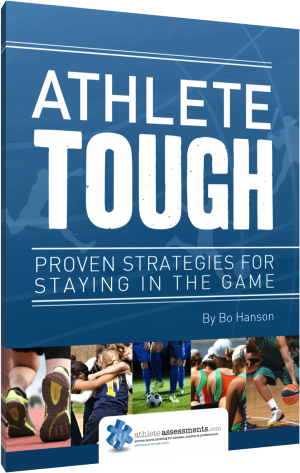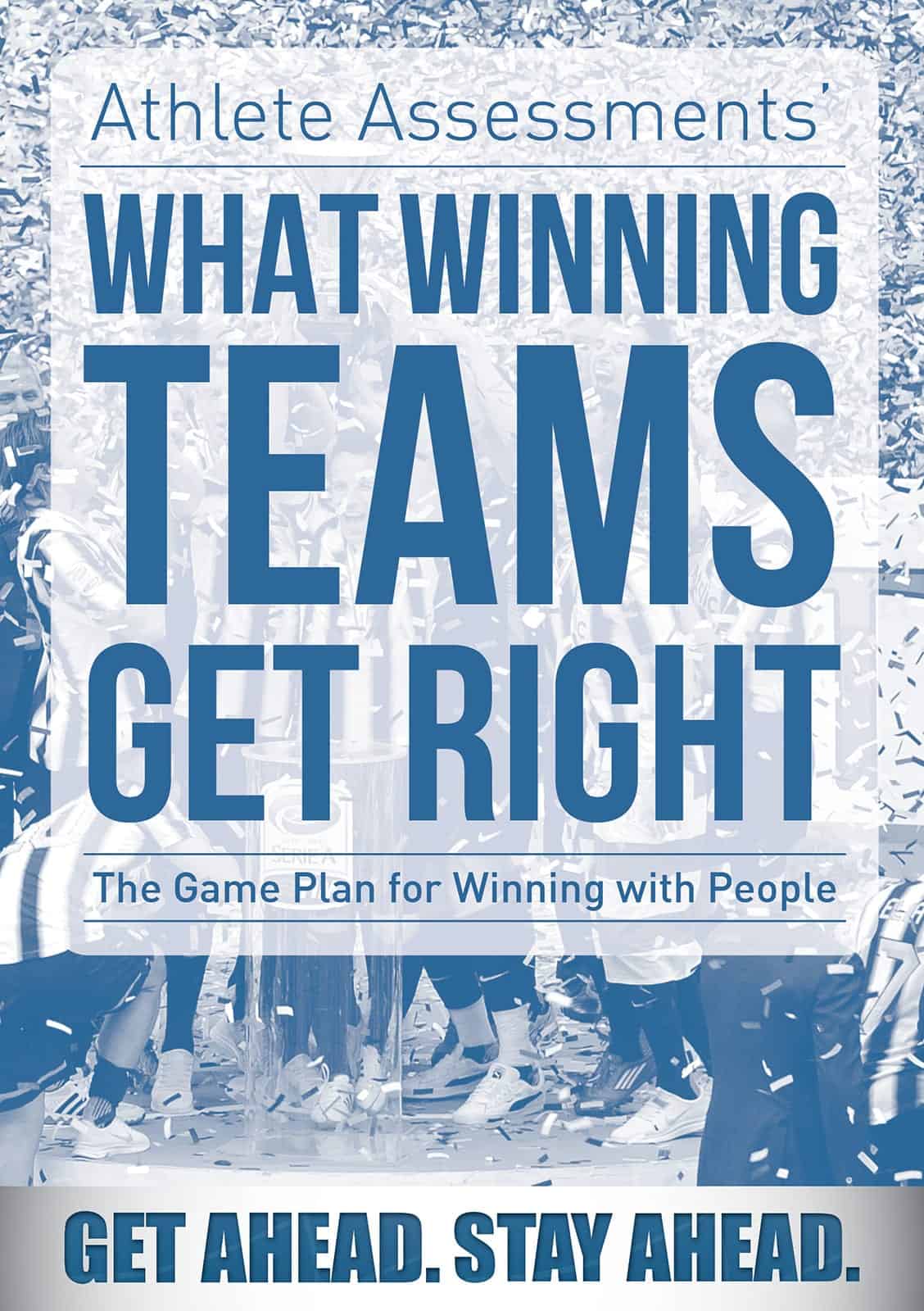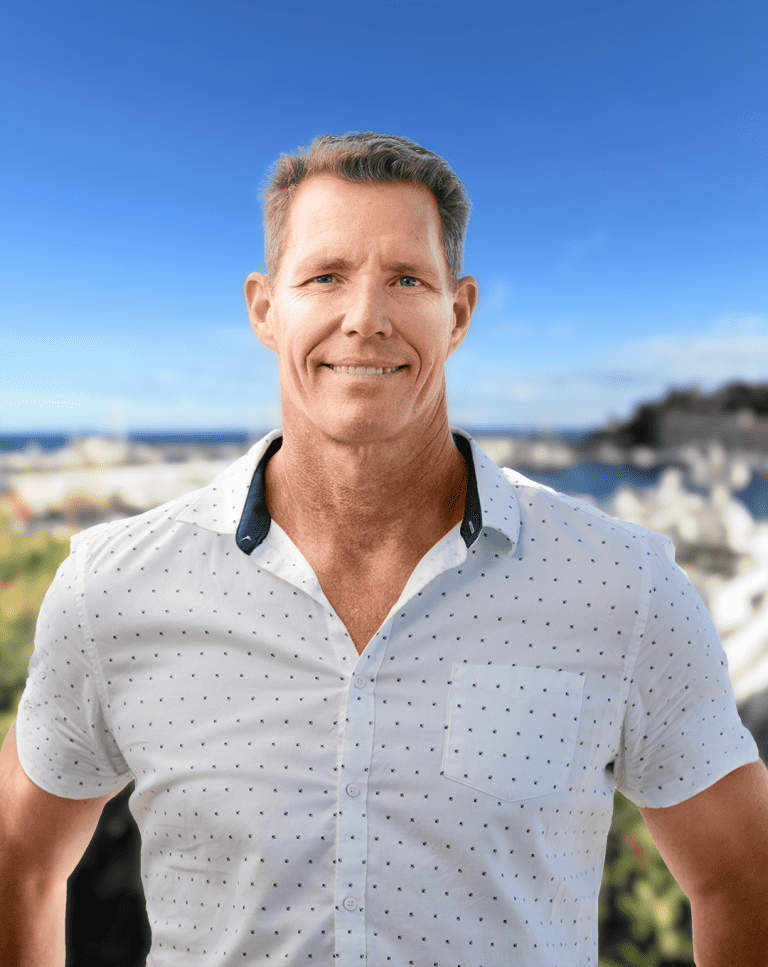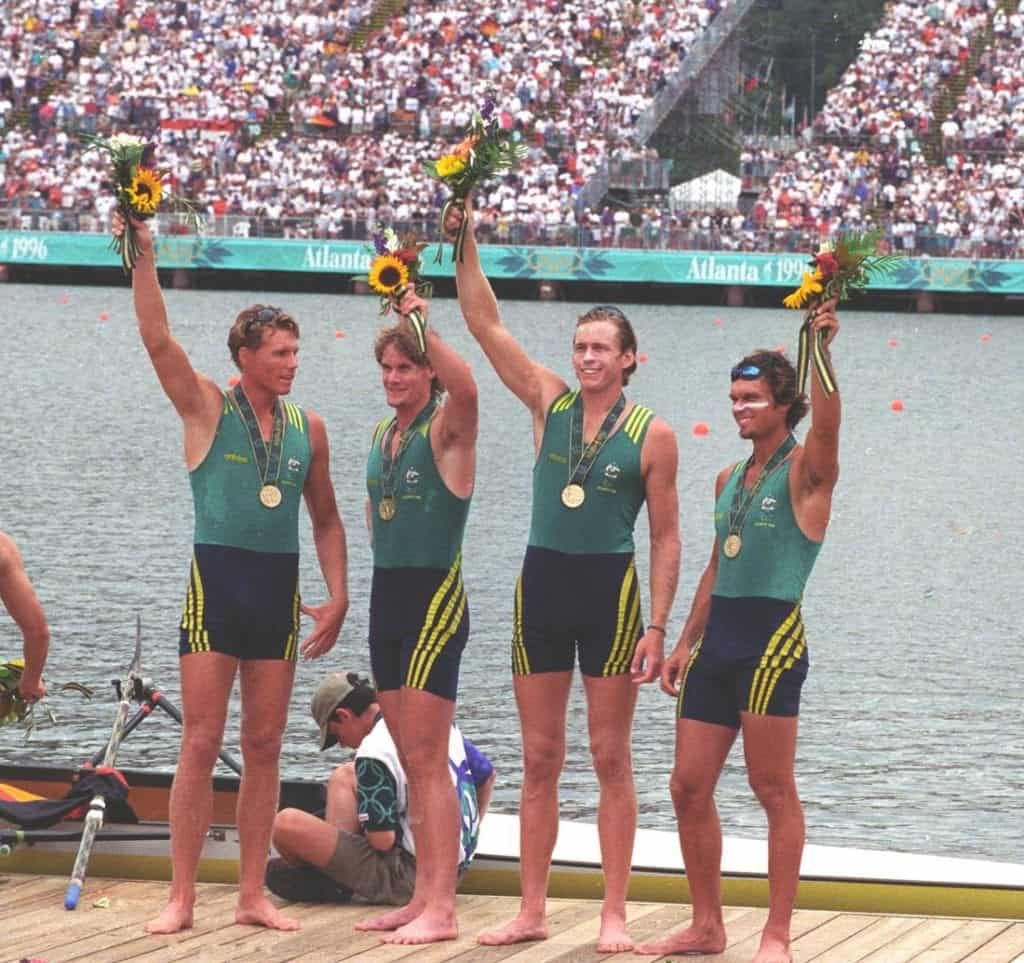5 Minutes with Bo Hanson: The Circle of Safety in Sport
What is the Circle of Safety and how is it relevant for sport?
At Athlete Assessments when we work with clients one of the really critical models we refer to is the Circle of Safety. The Circle of Safety is not a concept we developed ourselves, it is taken from models such as Maslow’s Hierarchy of Needs, and it is also taken from a lot of the work Simon Sinek has been doing, and the book that he wrote Leaders Eat Last.
The Circle of Safety refers to an environment the coach or leader creates for their athletes. What we mean by a safe environment is an environment where an athlete feels they can make a total contribution, where they can be themselves, where they can be free to communicate and express themselves without fear of being harassed or bullied or even negatively impacted by anyone else in that environment or even outside it. So within a lot of teams that we work with, the coach spends a lot of time looking at what the impacting factors are that might influence that Circle of Safety from outside. Such as the media, the role of drugs in sport, the parental expectations of athletes, what the college expects of athletes, the political environment that they have to perform within.
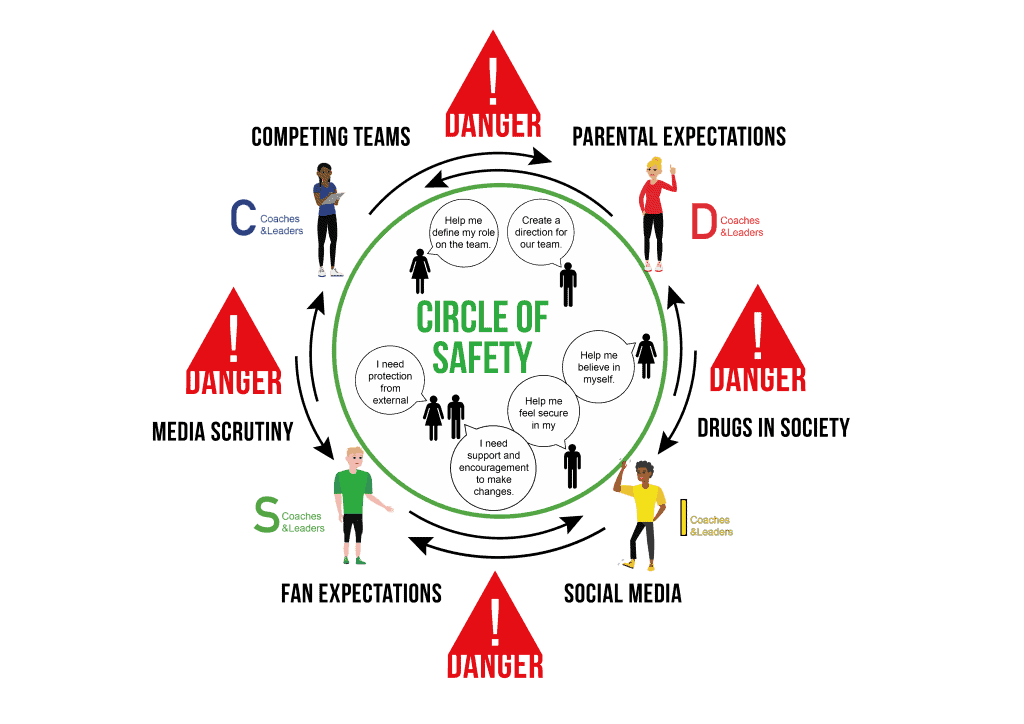
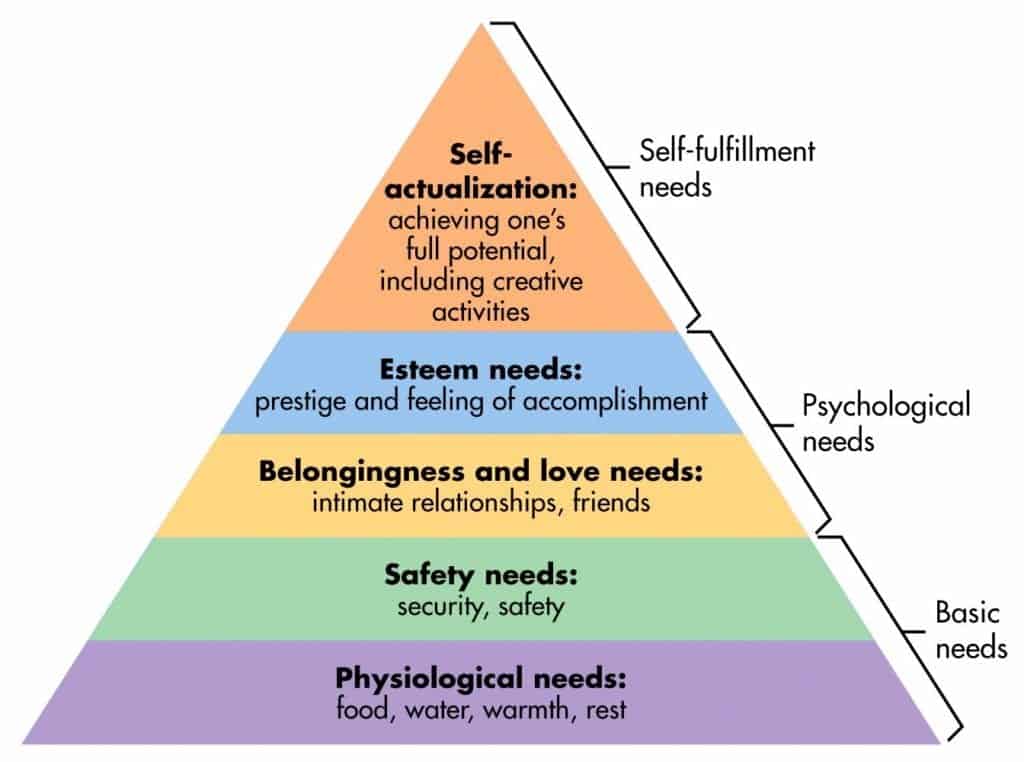
Now the key concept here is that if athletes don’t feel safe, they’re unlikely that they feel they’ll be able to make a full contribution and produce their best. I referred to a model before, Maslow’s Hierarchy of Needs, dating back to the 50’s when they first discovered that human beings had a series of needs which needed to be met in a certain order if they wanted to get to that final point of aspiring to be the best possible athlete or person we can be. One of those needs, the most basic needs are the need for food air and water. That’s like when you’re really hungry you forget to make a contribution to the team. Or when you’re absolutely exhausted on the field and your heart rate is at 180 and it’s been that way for a couple of minutes and you feel like you can’t go on, you forget about how you can be the best player for the team or how you can achieve your goals, or how you can execute your technique perfectly because one of your basic needs for air is being compromised.
Once we have that need met though, we have a need for security and safety, and this is what we mean by the Circle of Safety. So security in being part of the team, safety of being surrounded by people you know you can trust and believe in to have your back. Now what happens when that need is being met is a really interesting thing. (This is where it applies and it’s so critical to have a culture which embodies the Circle of Safety). Basically what happens is a natural human response to being in a safe environment is the cooperation and the trust that results between all people in that environment. Now every single team that we’ve worked with that has experienced some level of success, the athletes all talk about the fact they trust each other, the fact that they supported each other and the fact that they all had a strong level of cooperation and cohesion within the group.
What’s also interesting is if you consider an environment that doesn’t have that circle of safety and you look at some of the behaviors that emerge from the people within that environment. It’s not just in sport – it’s in business, it’s in politics, it’s in the corporate world. We’re talking about sport and in particular you get a high level of competitiveness, you get a high level of individualistic behavior. When we refer to that competitiveness you’re not just getting a healthy level of competition where people are supporting and pushing each other and challenging each other to be better. But you’re getting a level of competitiveness where I will try and beat you so that I can be in the team and that means you’re going to miss out. So I may actually do things to undermine you. That’s the political nature of competitiveness that undermines team performance.
If you don’t have a circle of safety, if you don’t have an environment where your athletes feel like they can trust the people around them and believe in each other, where they feel safe, where they feel secure and part of the team. You will end up with an environment where the athletes will begin to attack each other. When we talk about team chemistry and team dynamics, it plays a role in this.
Team chemistry is obviously an environment where people will safe, where they feel like they can make a quality contribution. So we look at the role of the coach, and as you know we’re working with our various DISC styles – the various behaviors that a coach based on their DISC profile will provide and do in order to create that safe environment.
For example a high D coach is going to be very good at creating an environment where everybody knows what goals are, where there is a vision that everyone wants to achieve, where the athlete knows how their role is going to contribute to the team and they know the job that they have to do. They also know that their role is not going to conflict with someone else’s role.
A high I style coach is very good at providing energy, atmosphere and enthusiasm. They’re also good at making it a fun environment and not taking things too seriously at times.
An S style coach is very good at nurturing every single athlete and making sure that they feel like they’re trusted and feel like they belong to the group – emphasizing the aspect of team.
A high C style coach creates a safe environment by making sure the environment is well-structured and well organised and logistically well planned so that things such as the fields have been booked, the necessary equipment is there, the doctors, the physio’s are there should anyone have an injury. It’s also knowing that the program that they’ve developed is the correct program for every single athlete and making sure they’re not doing exercises that biomechanically are going to injure you or damage you in some way.
The reality is, every single style of coach within the DISC model will contribute to this environment in a unique way. The bottom line is though is that we have to focus on creating this safe environment for our athletes and to recognize the way that we provide that environment and recognize that potentially there will be some gaps in what we’re providing. Once again it comes back to that concept of being adaptable with our coaching style.
As a last point, also recognizing that your different athletes will have different needs for what it will be that will make them feel safe. What a high D needs is going to be different to a high I or a high S or a high C. Appreciating these unique needs is another critical aspect of it and so if you want to find out more information on this you can visit our website, we’ve written numerous articles and you’ll also see a model there that talks about how to create a circle of safety.
You can watch all videos in the
5 Minutes with Bo Hanson series.
WHERE TO FROM HERE…
This topic is one of many topics covered in the ATHLETE TOUGH™ program developed by Bo Hanson. Being ATHLETE TOUGH is defined by the actions you take when your performance matters the most. Bo Hanson’s unique and proven program is designed to ensure your athletes never give up, never quit on their team and never quit on themselves. It will deliver strategies on how to be mentally resilient and provide step-by-step processes to help your athletes become and stay mentally strong. Find out more here.
Looking to catch up?
You can watch all videos in the 5 Minutes with Bo Hanson series.
At Athlete Assessments we’re here to provide you with excellence in service and to help you be your best. If there is anything we can do to be of service, don’t hesitate to contact us.


